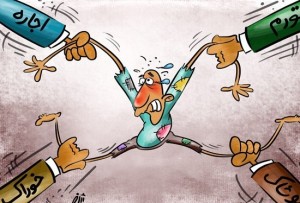Alex Vatanka writes: President Hassan Rouhani’s recent trip to Turkmenistan cannot be dismissed as a one-off. Since coming to office in August 2013, the Rouhani administration has prioritized relations with the Muslim states of the former Soviet Union. Given the potential for economic ties and trade, Tehran’s aspirations are fully understandable.
Meanwhile, the Central Asian states are largely receptive. But for this latest momentum to gain enduring traction, Tehran has to be smart about its appeal to the Central Asians. For them, Iran is a very familiar civilization and a much-needed bridge to world markets. On the other hand, any attempt by Tehran to interject its Islamist ideology into relations will very likely give the famously cautious secular Central Asian governments reasons to once again pull away.
Rouhani has said that Iran and Turkmenistan have decided to increase trade from $3.7 billion to $60 billion per year in 10 years time. There was not much detail about how such a 16-fold increase can be achieved for two countries that each rely extensively on exporting oil and natural gas.
Rouhani and his counterpart, President Gurbanguly Berdimuhamedov, signed 17 cooperation agreements in political, economic and cultural fields as well as a pledge to collaborate in tackling environmental issues. Both Iran and Turkmenistan are neighbors of warn-torn Afghanistan. Iranian-Turkmen cooperation about ways to prevent a spillover from Afghan instability and to combat the flow of Afghan drugs makes plenty of common sense. In that context.
In early December, Iran, Kazakhstan and Turkmenistan launched a much-awaited railway that will link Central Asia to Iran’s southern ports. The first cargo of Kazakh wheat has already been shipped through this new route. The new 930-kilometer (577-mile) rail link is promoted by Tehran as a critical part of a regional transit hub that Iran considers itself best suited to undertake. At the same time, geography alone makes Turkmenistan Iran’s inevitable “bridge to the rest of Central Asia,” a point made by a former Iranian ambassador to the region.
The Central Asian states are clearly open to more economic and infrastructural linkages with Iran. Much of the new infrastructure put in place since they gained independence in 1991 has been eastward orientated with the aim of linking up to the Chinese market. That has so far worked well but there is always a danger of overreliance on China. Russia, on the other hand, the traditional route for much of Central Asian oil and natural gas exports, is experiencing deep political and economic challenges thanks to its fallout with the West.
These security and economic realities facing Turkmenistan and the other Central Asian states are providing a new impetus for the Iranian option to be reconsidered. That Rouhani is committed to return Iran to the international mainstream economy, and is pushing ahead to resolve Tehran’s nuclear file with the international community, only encourages Central Asian confidence in looking for ways to work with Iran.

